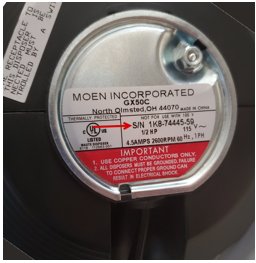
You might be wondering, what exactly is Error Code F2 about? Well, much like how a car dashboard light tells you something’s up with your engine, the F2 error code is the disposal’s way of alerting you to a problem. Typically, it indicates a jam or overload, which can happen when something goes wrong with the motor or when too much food waste is trying to get processed at once. Luckily, with the right know-how, you can prevent this issue and keep your disposal humming along effortlessly.
Understanding the Causes of Error Code F2
So, what leads to a jammed or overloaded disposal? Let’s break it down. Imagine trying to stuff your small backpack with an entire wardrobe; it’s simply too much to handle, right? That’s what happens when you overload your garbage disposal with waste it can’t process at once. The motor becomes overwhelmed, leading to the F2 error code.
Another culprit can be the type of waste you’re putting down the disposal. Certain materials, like fibrous vegetables (think celery or corn husks) and starchy foods like pasta or rice, expand with water and create a thick paste. These can wrap around the blades or clog the mechanisms, causing jams. Likewise, non-food items—accidentally or otherwise—can also trigger this issue. So, be mindful to only feed your disposal what it’s designed to handle.
Moreover, lack of regular maintenance can contribute to these problems. Just like how you wouldn’t let your car go without an oil change, your disposal needs some care too. Grease buildup, for example, can form a sticky layer that hinders the disposer’s ability to chop up food waste efficiently. Over time, this can lead to motor strain and, you guessed it, the dreaded F2 error. Ensuring you understand what goes into your disposal and conducting regular upkeep will help keep these issues at bay.
Steps to Prevent Future Occurrences of Error Code F2
First off, one of the most effective prevention tips is managing what and how much you feed into your garbage disposal. Picture your disposal as a picky eater; it prefers smaller, manageable portions. Always run cold water through the disposal before, during, and after use. This helps to flush through food particles and prevents clogs. Cold water keeps fats solid, so they don’t coat the blades and walls—a trick that’s as simple as it is smart.
Let’s talk about disposal-friendly habits. Avoid putting large quantities of material down the disposal at once. Chop waste into smaller pieces if necessary, and feed it into the disposal gradually. This is akin to not cramming all your groceries into one tiny drawer; everything needs space to move around freely. This approach reduces the risk of jams and keeps the motor humming smoothly.
Routine cleaning can’t be overlooked either. Think of it like brushing your teeth to avoid cavities. Every couple of weeks, use a mix of baking soda and vinegar to break down any buildup. Sprinkle baking soda into the disposal, follow it with vinegar, then let it sit for a few minutes before rinsing with water. Regularly doing this not only maintains peak performance but also curbs funky odors.
Troubleshooting Tips if You Encounter Error Code F2
Here’s the deal: despite your best efforts, errors can happen. If you find yourself face-to-face with an F2 code, turn off the disposal and unplug it immediately to prevent any further damage. Just as you wouldn’t touch a hot stove, don’t attempt to fix it while it’s still powered on.
Next, explore potential jams by carefully looking inside the disposal. Use a flashlight to peer inside, and with the help of tongs or pliers, gently remove any visible obstructions. If you’re comfortable, use the provided wrench to manually rotate the disposal’s blades from underneath, loosening any unseen clogs. Remember, safety first—avoid using your hands directly inside the disposal.
Once cleared, reset the disposal. Most units have a red reset button located at the base. Press it, and try running the disposal again with cold water. If the error persists, it may be time to consult a professional. Just like calling a mechanic for a persistent car issue, sometimes a disposal needs a pro’s touch.
Maintaining Your Moen Garbage Disposal for Longevity
Now that you’ve got the know-how to avoid F2 errors, let’s talk about extending your disposal’s lifespan overall. Regular maintenance is key—consider it like going to the doctor for annual check-ups. It’s best practice to listen for any unusual noises, akin to being alert to strange sounds in your car’s engine. Catching these early often prevents bigger issues down the road.
Additionally, familiarize yourself with the disposal’s manual and guidelines. Understanding your specific model’s capacities and limitations can inform how you use it daily. You wouldn’t take a compact car off-roading, after all—so don’t push your disposal beyond its limits.
Armed with these tips, you’re now prepared to keep your Moen garbage disposal in prime condition, while avoiding pesky interruptions from the F2 error code. Keep things simple, stay aware of potential pitfalls, and you’ll enjoy a hassle-free, fully functional kitchen appliance for years to come.